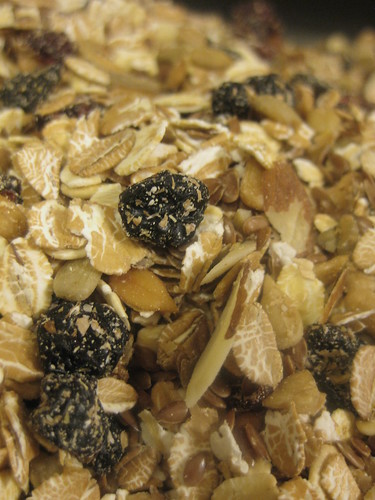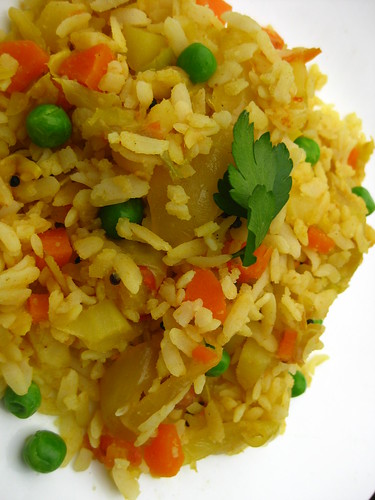
Amidst all the unpacking, house hunting, setting up a new life, and generally getting used to a different country has sent me on too many roller-coaster rides to count. Moving to a new country, despite living in our times, where the lines between different cultures are blurring, can still be a bit daunting. Then there have been some amazing experiences I have had since I arrived here. Therefore, I use the term "roller-coaster". And is it any surprise that most of the amazing ones have to do with my love for food? One of the delights I have discovered is the variety of ingredients and flavors available always. Though it can be quite a task to locate Indian goods, there is a whole world that beckons you the moment one enters the local super-store. Sometimes it can assume the proportions of a complicated project just to choose which new things to take home and experiment! Imagine getting home, poring over the internet to find a recipe to do justice to your ingredients, and realizing that you missed buying that one key ingredient! Very inconvenient wouldn't you say?
One of the great things I have come to love as a grown-up is salads. I can imagine many who read this shaking their heads in wonderment. Who doesn't like salads???!!! Well, to be honest, salads served in Indian households are nothing to boast about and are pretty simple affairs comprising of slices of raw cucumber, tomatoes, maybe an odd radish or two and a dressing of lemon juice and salt. And of course there are variations, but the underlying factor is that the flavor don't have the oomph to keep me interested day after day. So, there I was thumbing through my copy of "
The Complete Italian Vegetarian Cookbook" by Jack Bishop, I was introduced to the subtle art of vinaigrettes or dressings. Traditionally defined as a fine emulsion of oil and vinegar blended with spices, it can transform a salad into something magnificent. A well balanced vinaigrette or a dressing can really help pop out those flavors in the raw veggies.
I have been experimenting with different forms of grains recently. Bulgur intrigued me since it was it is made from whole durum wheat, and does not require (or minimal) cooking! It is a close cousin to cracked wheat or "Dalia" as it is known in India. In contrast to cracked wheat, bulgur requires just a quick soak in hot water before its ready. The secret to quick cooking nature of bulgur is that it is parboiled. Parboiling before dehusking locks the precious nutrients in the hull of the wheat berries within the berry, that would have been otherwise lost. More information about bulgur can be read
here.
For the roasted tomato and spinach bulgur salad, I used a honey based dressing. A honey based dressing and the nutty flavors of bulgur are really match made in heaven. The honey tones play a starring role in this salad while the chick-peas and spinach add body to the entire dish. Of course, the reds, greens and the hues of brown look nothing short of confetti left from Christmas. An interesting side dish or a complete meal in itself, the salad is a great way to detox after weeks of holiday indulgences.
Roasted Tomato and Spinach Bulgur Salad
I used slices of tomatoes here, but cherry tomatoes just look much better. I also used leftover cooked chickpeas which I had cooked from scratch a day earlier. Canned chickpeas drained to remove all liquid would work fine. Roasted cumin powder really rounds out the honey notes and it is highly recommended that you add it.
Ingredients
(Serves 2 hungry adults/ four adults as a side dish)
For the salad:
Bulgur- 1.5 cups
Spinach- Cut into ribbons- 1 cup
Roasted Cherry Tomatoes- 1 cup
Cooked chickpeas/1/3rd cup or Drained can chickpeas- 1/2 can
For roasting tomatoes:
Extra virgin olive oil - 1 tablespoon
Salt - 1/2 teaspoon
Freshly ground Pepper- To taste
For the dressing:
Extra virgin olive oil- 1/3rd cup
Honey- 2 tablespoons (or to taste)
Cumin powder- roasted - 1/2 teaspoon (or to taste)
Freshly ground Pepper- few rounds
Lemon Juice- 1 tablespoon
Directions
Preheat the oven at 375 F. For roasting tomatoes, in a oven safe wide dish or casserole, drizzle washed and dried cherry tomatoes with oil. Choose a dish which allows a little distance between tomatoes to allow roasting. If the dish is small and tomatoes overlap, they will steam rather than roast. Add salt and pepper to taste and toss to cover all tomatoes. Place the dish into the oven and roast for about 20-25 minutes till the outer skins of tomatoes shrivel and liquids released around tomatoes begin to char. Remove from the oven and cool. You can remove the skins from the roasted tomatoes after they cool down to let them remain.
Whisk all ingredients listed for the dressing in a cup till smooth emulsion like consistency is achieved and keep aside. This may take a little longer because of the sticky nature of honey. Adjust to taste if necessary.
For cooking bulgur, bring 3 cups of water to a rolling boil. In a large bowl, pour boiling water over bulgur and keep it aside for 15-20 minutes until soft. Use a large bowl since bulgur expands after absorbing water. Drain off excess water and gently squeeze out more water from the soaked bulgur. This step is crucial since the salad will become soggy if excess water remains.
Toss bulgur, chickpeas, spinach, tomatoes and the dressing and enjoy! The salad should be served immediately as the spinach will get soggy from the dressing if kept sitting for long. For best results, add dressing in the end just before serving.


